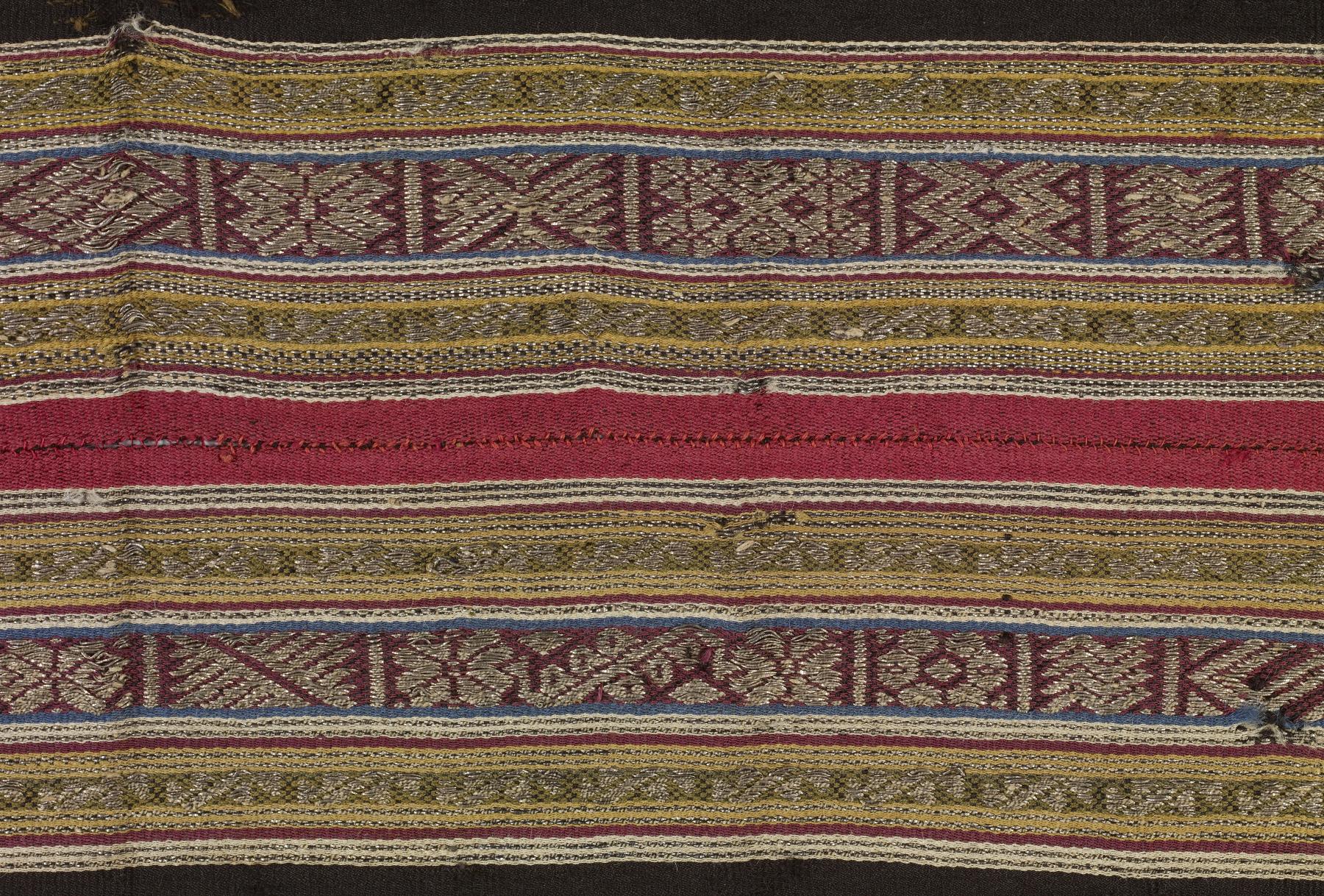"Lliclla" (Woman's Wrap)
(Ancient Americas )
Although dating to the colonial period, likely the seventeenth century, this lliclla, or woman’s mantle shows the continuity of textile traditions in the Andes. Women’s dress in the Andes remained consistent for centuries, if not millennia, and included a wrapped dress, held in place with silver pins, a mantle similar to this worn over it and closed at the breast with another pin. Such mantles had ritualized formulas for the disposition of different textile bands across them, each with their own name and meaning. In the Inca and early colonial period, these bands were fairly wide and included the stylized patterns known as tocapu, which showed the ethnic identity of the wearer. Although by the seventeenth century, the stripes were narrower, patterns only legible to the wearer and those who interacted closely with her, they retain stylized patterns derived from the tocapu. Innovation and the embrace of European materials in the colonial period is shown in the mantle through the inclusion of metallic threads in the mantle. Although these silver threads are interspersed with larger fields of plain weave, such elaborate patterning shows that this mantle was likely the property of a noblewoman, called ñusta in the Quechua language of the Incas.
Provenance
Provenance (from the French provenir, 'to come from/forth') is the chronology of the ownership, custody, or location of a historical object. Learn more about provenance at the Walters.
Purchased by Georgia de Havenon, New York; given to Walters Art Museum, 2016.
Geographies
Bolivia (Place of Origin)
Measurements
H: 20 x L: 30 in. (50.8 x 76.2 cm)
Credit Line
Gift of Georgia and Michael de Havenon, 2016
Location in Museum
Not on view
Accession Number
In libraries, galleries, museums, and archives, an accession number is a unique identifier assigned to each object in the collection.
In libraries, galleries, museums, and archives, an accession number is a unique identifier assigned to each object in the collection.
2011.20.11




